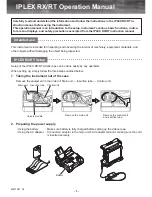
Operator’s Manual
EAR99 technology subject to restrictions on copyrights page.
33
Common Mode Range
The Common Mode Range is the maximum voltage with respect to earth ground that can be
applied to either input. Exceeding the common mode range (if the probe is so rated) can result
in unpredictable measurements or damage to the probe, DUT, oscilloscope or operator. Safety
standards are typically used to specify the maximum common mode voltage that the probe may
be safely used at, with different ratings based on whether the probe is designed to be used to
measure mains voltages (and if so, how close to low impedance utility supply the measurement
can be made) and if the probe is designed to be hand-held.
Most hand-held probes with high common mode voltage safety ratings are large and bulky (for
obvious reasons) and impractical to use on dense, compact power electronics circuits. More
recently, safety standards have recognized this reality and created new measurement
categories for probes used in test and measurement applications and not connected to the
mains. However, probes like the HVFO defy measurement categorization. The HVFO uses a fiber
optic cable to optically isolate the amplifier from the grounded measurement instrument, and is
not designed to be hand-held at common mode voltages > 30 V
RMS
/60 V
DC
. The practical
common mode range in this case when not hand-held is simply the expected dielectric
withstand rating of the fiber optic cable connection between the transmitter and demodulating
receiver. Realistically, this is much, much greater than typical test voltages in 600 V class power
electronics applications, and can range into the tens of kilovolts. User should follow
appropriate safety guidelines when using the HVFO with these levels of common mode
voltages.










































